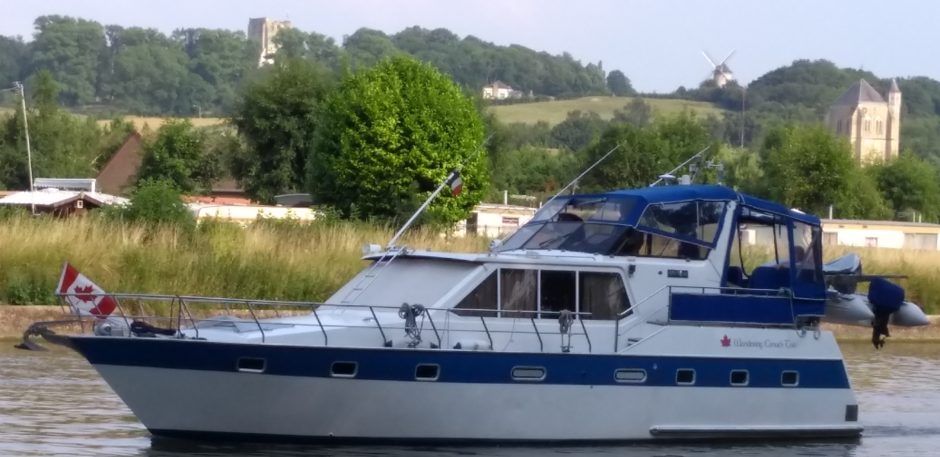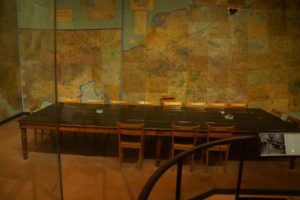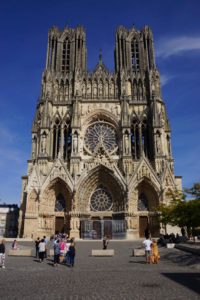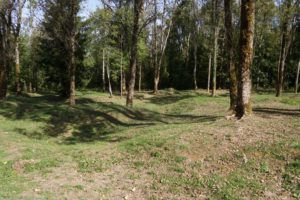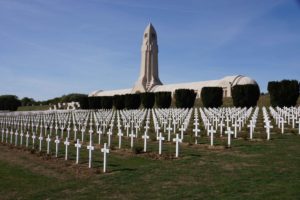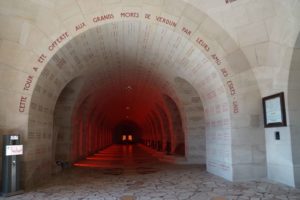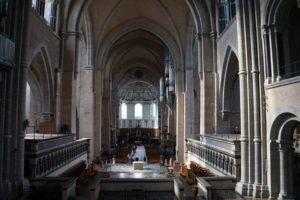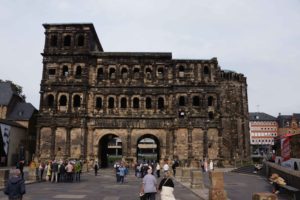A month of change for me. I finished up my exploration in France for this year, moving the boat to it’s winter mooring in Pont-a-Bar. I spent the last two weeks of September exploring by car with Pat and Kerry, and we toured all over the area: Reims, Verdun, Trier, Bastogne, Charleville-Meziers, and Luxembourg.
Reims provided a wonderful day, where we explored another magnificent cathedral, this one where (almost) all the kings of France have been crowned. We also visited the museum in Rooseveldt High School, where the Nazis surrendered to the western Allies on May 7, 1945. The Russians were miffed that the surrender didn’t occur in Berlin, to them, so a repeat ceremony was held there later. Politics! The school was used as Allied Headquarters, but has been returned to it’s school function.
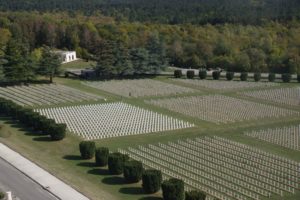
part of the cemetery from the top of the monument. the center section are graves of soldiers from Morocco and Algeria (muslim) who died for France
Verdun was for shopping and restocking, but we also went to the nearby village of Douamont, which was one of several villages destroyed in the extended fighting around Verdun, during the first World War. The national monument of France is there, remembering almost 1 million people who died in the fierce conflict in the area. The ossuary contains the bones of more than 130,000! The cemetery in front of the monument has many identified graves as well. A monument to peace, there is a video presentation which has side-by-side scenes from both sides of the conflict. A very good video about the Verdun area and WW1.
We also visited Luxembourg, but difficulties in finding parking anywhere near the city center, made our trip a drive-through. We went on to Trier in Germany, which made that a 4 country day. Trier has a huge cathedral and church complex, and has been a significant city since Roman times. The Porta Nigre is the Roman gate to the city.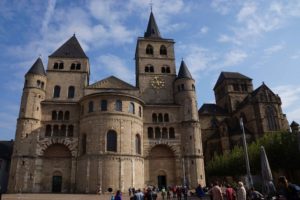
Bastogne is another center of military interest, but this time, of World War 2. A hold-out place, it was not conquered by the Nazis during the battle of the Ardennes, also known as the Battle of the Bulge. Occurring during December 1944, this was the last attempt of the Nazis to succeed in that war. There are several sites to visit, but we could only get to the main museum, and the American memorial monument.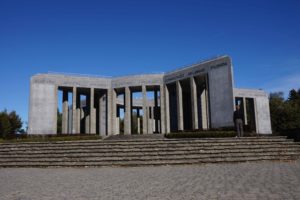
The amount of effort, money, and the cost in people’s lives during the major conflicts that have occurred in this area, is staggering. Such a waste! Hopefully, people are smart enough to realize that, and such conflicts never occur again. Seeing the aftermath: cities needing complete re-building, the huge cost in lives- and that is only part of the cost to people- the injured, wounded, and traumatized ones are more hidden from notice. It is difficult for a Canadian to really understand the impact of war, as we have not had war afferct us in the same way. It has been a significant learning experience!
I am now embarking on a month of land-based touring in Britain, re-visiting friends, ringing a little, and exploring a place or two inaccessible to boats.
